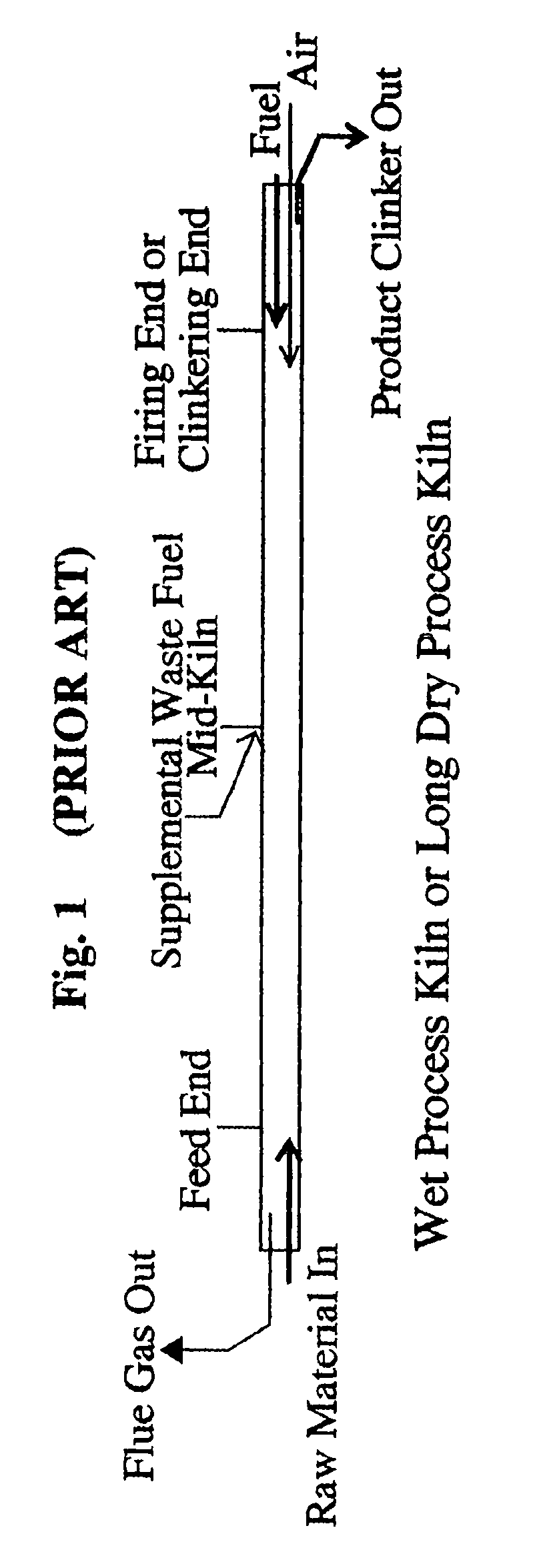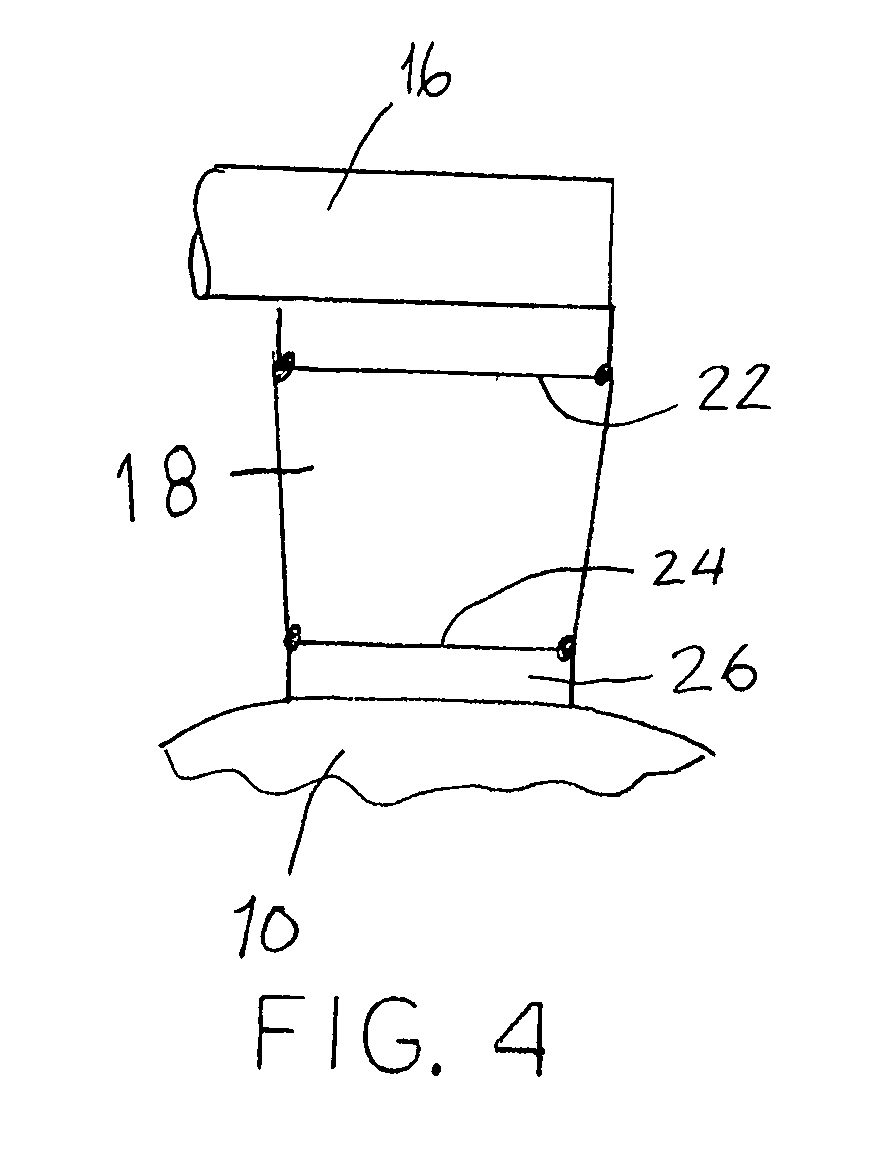Mid-kiln injection of waste-derived materials
a technology of waste-derived materials and injection chambers, which is applied in the direction of cement production, etc., can solve the problems of disposal and environmental problems, and achieve the effect of ensuring the clinker production of the kiln
- Summary
- Abstract
- Description
- Claims
- Application Information
AI Technical Summary
Benefits of technology
Problems solved by technology
Method used
Image
Examples
Embodiment Construction
[0021]For the purposes of promoting an understanding of the principles of the invention, reference will now be made to the embodiments illustrated in the drawings and described in the following written specification. It is understood that no limitation to the scope of the invention is thereby intended. It is further understood that the present invention includes any alterations and modifications to the illustrated embodiments and includes further applications of the principles of the invention as would normally occur to one skilled in the art to which this invention pertains.
[0022]The present invention contemplates the addition of non-traditional waste materials to a cement kiln, especially a rotary long kiln. One such waste material is weathered clinker. Weathered clinker is previously manufactured clinker that has been stored for a significant amount of time, usually outdoors. Most cement production is seasonal, with the highest demand for clinker coming in the summer. During the ...
PUM
| Property | Measurement | Unit |
|---|---|---|
| gas temperature | aaaaa | aaaaa |
| temperature | aaaaa | aaaaa |
| temperature | aaaaa | aaaaa |
Abstract
Description
Claims
Application Information
 Login to View More
Login to View More - R&D
- Intellectual Property
- Life Sciences
- Materials
- Tech Scout
- Unparalleled Data Quality
- Higher Quality Content
- 60% Fewer Hallucinations
Browse by: Latest US Patents, China's latest patents, Technical Efficacy Thesaurus, Application Domain, Technology Topic, Popular Technical Reports.
© 2025 PatSnap. All rights reserved.Legal|Privacy policy|Modern Slavery Act Transparency Statement|Sitemap|About US| Contact US: help@patsnap.com



